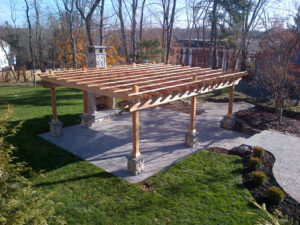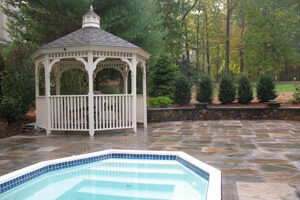 Would you notice the difference between a pergola and a gazebo? Don’t worry, most of us wouldn’t!
Would you notice the difference between a pergola and a gazebo? Don’t worry, most of us wouldn’t!
The main difference between the two is that pergolas are generally attached to a structure while gazebos are free-standing structures. There are distinct advantages to each one, so understanding exactly what these outdoor structures are is helpful when determining which one will best fit your outdoor space.
What are Pergolas?
Pergolas are intended to be covered walkways that feature a rectangular shape, four legs and an open rooftop, with a common option being crisscrossed or open flat planks of wood. Pergolas may be found in gardens, and they are often attached to other structures. With their open tops and ability to be placed in gardens, pergolas allow plants and vines to climb up the structure. They are also smaller than gazebos.
What are Gazebos?
Gazebos are larger and have a full roof, and their main purpose is for people to gather under them, often in a backyard setting. Gazebos are most popular compared to pergolas or pavilions for residential homes, and they are distinguished by their round diameter, octagon shape and eight pillars. The rooftop is domed since the shape of the gazebo is round, which is nice for installing a fan or lights and giving the gazebo air circulation.
in a backyard setting. Gazebos are most popular compared to pergolas or pavilions for residential homes, and they are distinguished by their round diameter, octagon shape and eight pillars. The rooftop is domed since the shape of the gazebo is round, which is nice for installing a fan or lights and giving the gazebo air circulation.
Which One is Best?
Choosing a pergola or gazebo doesn’t have to be difficult since each one has its own purpose. If you’re looking for an outdoor pathway or a way to connect two structures, such as your home to a shed or garage, a pergola is best. Plus, you may install a pergola in a garden area where the vines are free to grow and climb up the walls.
If you are looking for a place where you can enjoy intimate gatherings, a gazebo is an excellent choice. They are very popular in backyards and can be used for entertaining, barbecues or summer nights. There are also many features that can be added to gazebos to make them more functional, such as screened windows to keep the bugs out and running electricity for lights or a TV.

